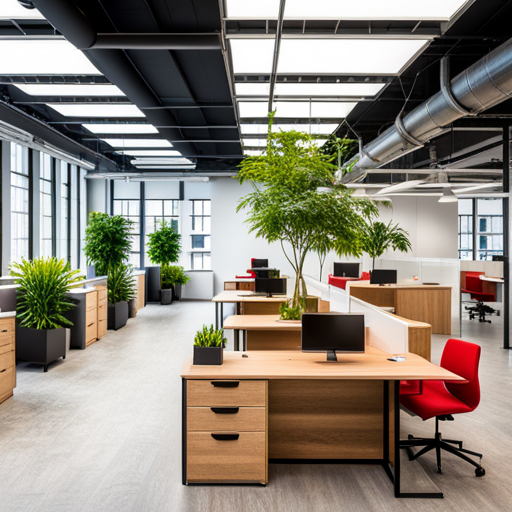- Products
- Quickship
- Clearance
- Services
- Projects
- Contact
- About Us
- Testimonials

Indoor air quality is a growing concern, with many modern airtight office buildings allowing the accumulation of air pollutants that lead to “sick building syndrome.” Volatile organic compounds (VOCs) off-gassed from office furniture, carpet, cleaning products, and electronics can cause short and long term health issues for workers. Strategically incorporating houseplants into office spaces has been shown to help naturally filter out these harmful toxins.
Studies by NASA, University of Queensland, Washington State University and others have tested how effectively different houseplants can absorb common VOCs like benzene, formaldehyde, trichloroethylene, and xylene. Popular office plants like peace lilies, English ivy, azaleas, and snake plants were found to remove 60-90% of these toxins from sealed lab chambers over 24-hour test periods [1].
Beyond just air purification, offices with live indoor plants have also demonstrated tangible gains in worker satisfaction and productivity. In multiple studies, employees working in spaces with added greenery report 15-25% higher job satisfaction, productivity, and cognitive function compared to those in sterile plant-free offices [2][3]. Researchers attribute these psychological and performance boosts to biophilic reactions - humans innately focusing and functioning better when surrounded by natural elements.
A 2015 global workplace report on biophilic design emphasized the importance of integrating natural elements like plants, sunlight, natural materials and views of nature in office environments [4]. Though it did not provide exact quantified gains, the report referenced academic studies showing biophilic design improves outcomes like employee wellbeing, productivity, and creativity. For example, it cited research indicating people derive greater mental restoration and recovery from nature-inspired spaces. The report concluded that incorporating biophilic design can have a significant positive impact on workers.
Houseplants can be a cost-effective complementary strategy to improve indoor office air quality. Place them near ventilation systems, common work zones, and individual desks to maximize air circulation exposure. Choose hardy varieties suited to indoor conditions and experiment with placements to determine impact. Focus on the root zone soil as this is where much of the VOC breakdown occurs through microorganism interactions. Maintain plants per individual variety light and watering needs.
Adding a few houseplants is an easy way to bring nature’s benefits indoors. You’ll not only breathe easier, but also potentially see gains in worker satisfaction, cognitive function, and productivity from the tranquil green ambiance. As urban office environments become more isolated from the natural world, purposeful biophilic elements like houseplants will only grow in value for employee health, wellness and performance.
References:
If you want to know more contact us:

When establishing or renovating an office space, many businesses prioritize cost-cutting measures, often at the expense of furniture quality. However, investing in high-quality office furniture delivers substantial long-term returns. From enhancing employee productivity to elevating your company’s image, the value of quality office furniture is undeniable. 1. Employee...
+ Read More
As the new year begins, it's the perfect time to reevaluate your workspace and make changes that enhance productivity and well-being. A well-organized, thoughtfully designed workspace can significantly impact your focus, creativity, and efficiency. Here are four main areas to focus on as you transform your office and set the stage for a successful year. 1. Assess Your Current...
+ Read More
In modern workplaces, employee health and productivity are intertwined. Poorly designed furniture often leads to discomfort, fatigue, and even long-term health issues, affecting both morale and efficiency. Investing in ergonomic solutions can transform the workspace, creating an environment that prioritizes well-being and performance. Here’s how to address common health challenges with...
+ Read More